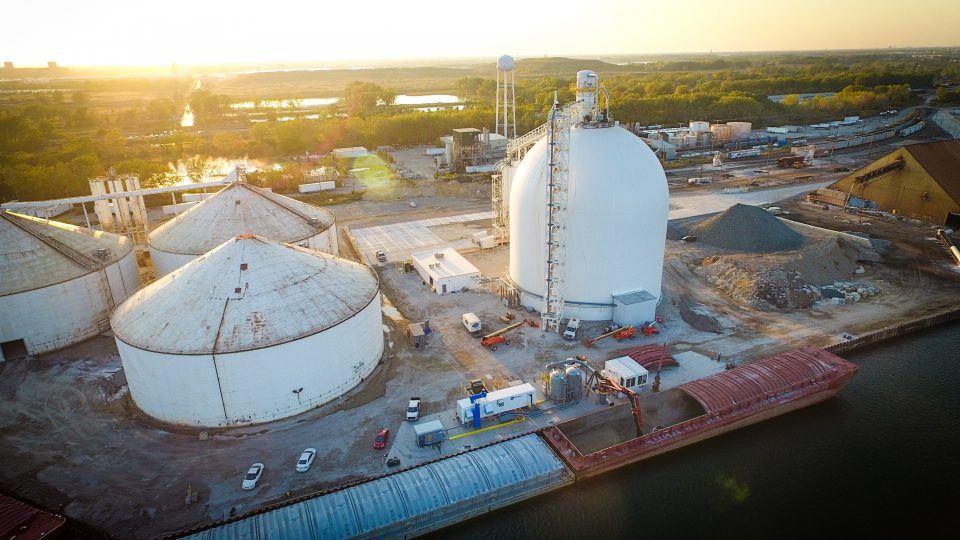One of the hallmarks of quality workmanship is the number of repeat customers it generates, and Dome Technology has worked with some of the biggest industry leaders on multiple projects. This is the fourth part in a five-week series highlighting a lineup of Dome Technology customers who’ve come back for more.

To meet anticipated increases in demand, concrete producer Ozinga contracted with Dome Technology to build a DomeSilo in Chicago, Illinois, that stands 125 feet (38.1 meters) in diameter and 138 feet tall and can store 50,000 metric tons of cement. Product is loaded pneumatically via a barge unloader, and dual Fuller-Kinyon pumps convey cement from the dome to two day bins. The apex easily supports the 45,000-pound filtration system that provides excellent dust protection. The system consists of 272 filters, minimizing the dust escaping the structure.
Ozinga management considered slip-form concrete silos, bolted steel silos, and flat storage for the Chicago site, but “we determined that the dome storage was the most economical and efficient form of storage for the amount of material we wanted to store and the amount of annual put-through,” company president Marty Ozinga IV said.

Later Ozinga hired Dome Technology again, this time to act as construction manager for Chicago terminal expansion and oversaw the erection of two 4,000-ton silos, one rail silo, one blower building/electrical room, and three operator load-out kiosks.
In addition, new rail lines and switches were installed, and piping, electrical, and controls were put in. Two new truck scales and one new rail scale were added to the site, as well as automation and programming for these systems.
A host of conveyance options were also introduced. For offloading, product can be conveyed to barge, railcar, or truck; product can also be loaded into the existing 50,000 metric ton dome, which Dome Technology built in 2017. On the loading side, inbound product can be housed in one of the 4,000-ton silos, the rail silo, the existing 10,000-ton tanks, trucks, or rail cars—“that’s a lot of versatility,” said Dome Technology project manager Brent Toone.